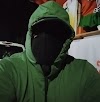1. Chlorine gas can be prepared by
[a] Bosch Process
[b] Haber Process
[c] Ostwald Process
[d] Deacon’s Process
2. The isotope of hydrogen that does not contain any neutrons in its nucleus is
[a] Protium
[b] Deuterium
[c] Tritium
[d] Both [b] & [c]
3. The nonmetal which exists as a liquid in room temperature is
[a] Iodine
[b] Bromine
[c] Fluorine
[d] Mercury
4. Lord Rayleigh and Sir William Ramsay were awarded Nobel Prizes in 1904 for their discovery of
[a] Radioactivity
[b] Superconductivity
[c] Noble gases
[d] Transuranic elements
5. Baeyers’s reagent is
[a] Dilute alkaline solution of KMnO₄
[b] Alkaline Solution of K₂(Hgl₄)
[c] Copper Sulphate Solution
[d] Solution of Mercuric and Mercurous Nitrate
6. Brass is an alloy of
[a] Aluminium & Zinc
[b] Copper & Aluminium
[c] Nickel & Zinc
[d] Copper & Zinc
7. Dry ice is
[a] Solid Sulphur Dioxide
[b] Solid Ammonia
[c] Solid Carbon Dioxide
[d] Solid Hydrogen Sulphide
8. Silver Nitrate is commonly known as
[a] Lunar Caustic
[b] Caustic Soda
[c] Blue Vitriol
[d] White Vitriol
9. An extremely toxic and deadly compound responsible for the Bhopal gas tragedy is
[a] Benzene Hexachloride
[b] DDT
[c] Methyl isocyanate
[d] Methyl alcohol
10. Nitrogen present in an organic compound can be estimated by
[a] Dumas Method
[b] Kjeldahl’s Method
[c] Carvis Method
[d] both [a] & [b]
11. The molecular formula of benzene is
[a] C₆H₁₄
[b] C₆H₁₂
[c] C₆H₁₀
[d] C₆H₆
12. Different components of Crude oil are separated in the petroleum industry by
[a] Chromatography
[b] Fractional distillation
[c] Crystallization
[d] Differential extraction
13. Thermodynamically stable allotropic form of carbon is
[a] Diamond
[b] Graphite
[c] Fullerene
[d] Coke
14. Marsh gas is
[a] Methane
[b] Ethane
[c] Propane
[d] Butane
15. The substance added to LPG to detect leakage is
[a]Ethanol
[b] Ethyl Mercaptan
[c] Ethylamine
[d] Chloroethane
16. Nucleus was discovered by
[a] Neils Bohr
[b] J J Thompson
[c] James Chadwick
[d] Rutherford
17. Atoms of the same element having the same atomic number but different mass numbers are called
[a] Isomers
[b] Isobars
[c] Isotones
[d] Isotopes
18. The maximum number of electrons that can be accommodated in an orbital is
[a] 2
[b] 6
[c] 10
[d] 14
19. Fl is the symbol of
[a] Fluorine
[b] Flerovium
[c] Fermium
[d] Francium
20. Isosters are molecules containing the same number of
[a] protons & neutrons
[b] atoms and electrons
[c] atoms & neutrons
[d] electrons & neutrons
[a] Bosch Process
[b] Haber Process
[c] Ostwald Process
[d] Deacon’s Process
2. The isotope of hydrogen that does not contain any neutrons in its nucleus is
[a] Protium
[b] Deuterium
[c] Tritium
[d] Both [b] & [c]
3. The nonmetal which exists as a liquid in room temperature is
[a] Iodine
[b] Bromine
[c] Fluorine
[d] Mercury
4. Lord Rayleigh and Sir William Ramsay were awarded Nobel Prizes in 1904 for their discovery of
[a] Radioactivity
[b] Superconductivity
[c] Noble gases
[d] Transuranic elements
5. Baeyers’s reagent is
[a] Dilute alkaline solution of KMnO₄
[b] Alkaline Solution of K₂(Hgl₄)
[c] Copper Sulphate Solution
[d] Solution of Mercuric and Mercurous Nitrate
6. Brass is an alloy of
[a] Aluminium & Zinc
[b] Copper & Aluminium
[c] Nickel & Zinc
[d] Copper & Zinc
7. Dry ice is
[a] Solid Sulphur Dioxide
[b] Solid Ammonia
[c] Solid Carbon Dioxide
[d] Solid Hydrogen Sulphide
8. Silver Nitrate is commonly known as
[a] Lunar Caustic
[b] Caustic Soda
[c] Blue Vitriol
[d] White Vitriol
9. An extremely toxic and deadly compound responsible for the Bhopal gas tragedy is
[a] Benzene Hexachloride
[b] DDT
[c] Methyl isocyanate
[d] Methyl alcohol
10. Nitrogen present in an organic compound can be estimated by
[a] Dumas Method
[b] Kjeldahl’s Method
[c] Carvis Method
[d] both [a] & [b]
11. The molecular formula of benzene is
[a] C₆H₁₄
[b] C₆H₁₂
[c] C₆H₁₀
[d] C₆H₆
12. Different components of Crude oil are separated in the petroleum industry by
[a] Chromatography
[b] Fractional distillation
[c] Crystallization
[d] Differential extraction
13. Thermodynamically stable allotropic form of carbon is
[a] Diamond
[b] Graphite
[c] Fullerene
[d] Coke
14. Marsh gas is
[a] Methane
[b] Ethane
[c] Propane
[d] Butane
15. The substance added to LPG to detect leakage is
[a]Ethanol
[b] Ethyl Mercaptan
[c] Ethylamine
[d] Chloroethane
16. Nucleus was discovered by
[a] Neils Bohr
[b] J J Thompson
[c] James Chadwick
[d] Rutherford
17. Atoms of the same element having the same atomic number but different mass numbers are called
[a] Isomers
[b] Isobars
[c] Isotones
[d] Isotopes
18. The maximum number of electrons that can be accommodated in an orbital is
[a] 2
[b] 6
[c] 10
[d] 14
19. Fl is the symbol of
[a] Fluorine
[b] Flerovium
[c] Fermium
[d] Francium
20. Isosters are molecules containing the same number of
[a] protons & neutrons
[b] atoms and electrons
[c] atoms & neutrons
[d] electrons & neutrons




























0 Comments